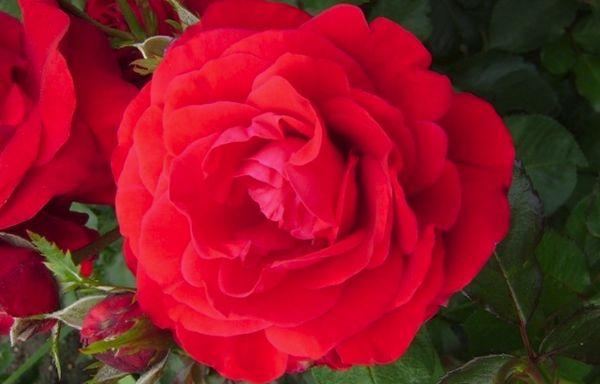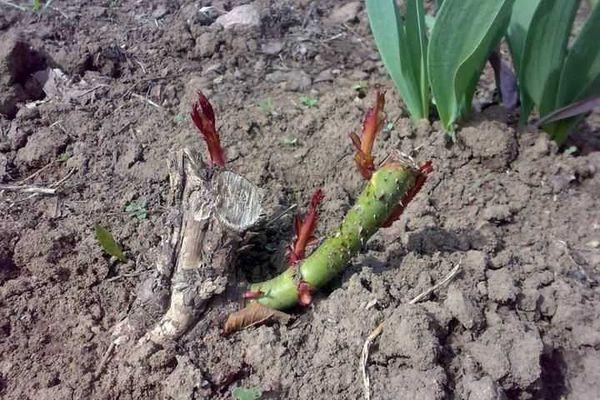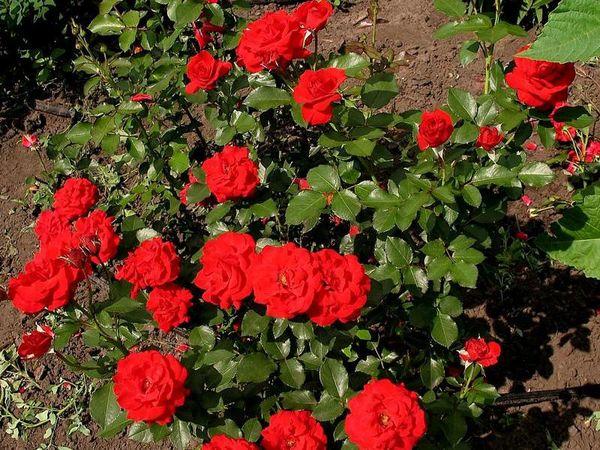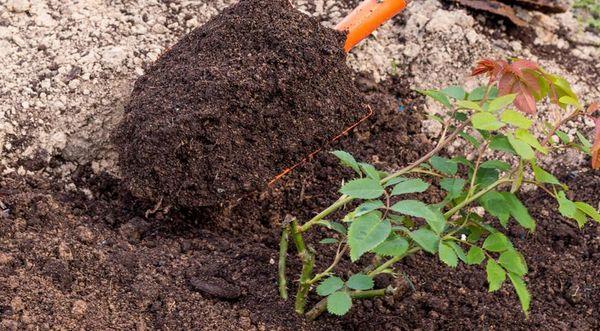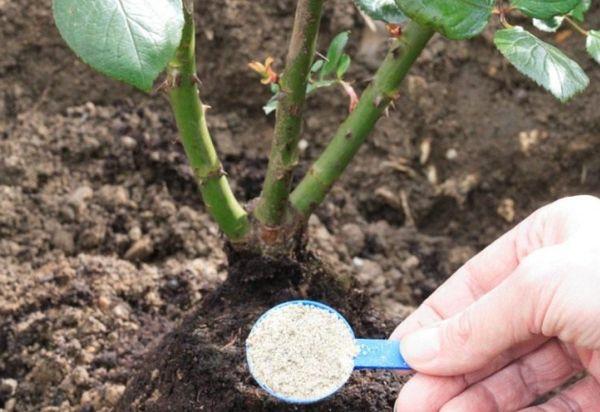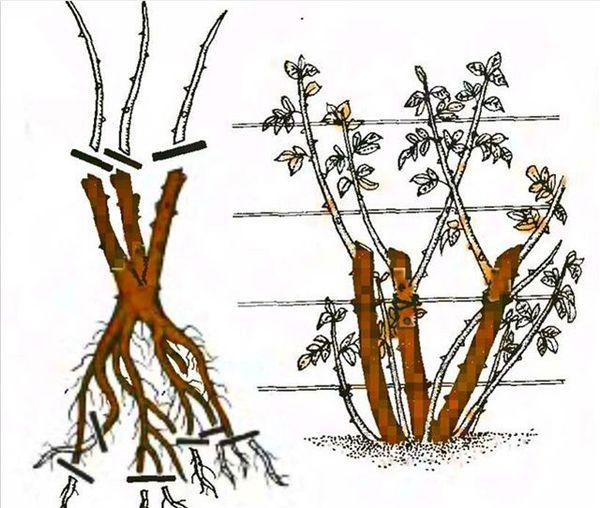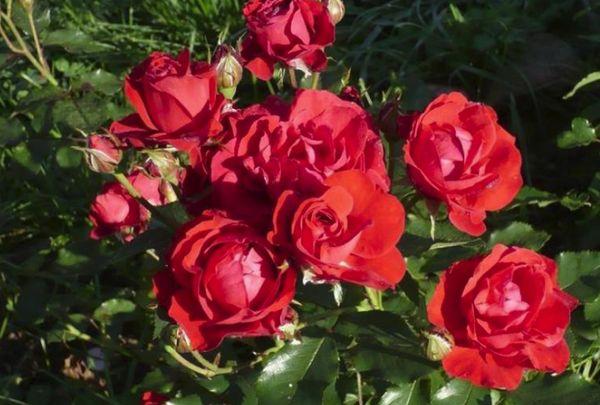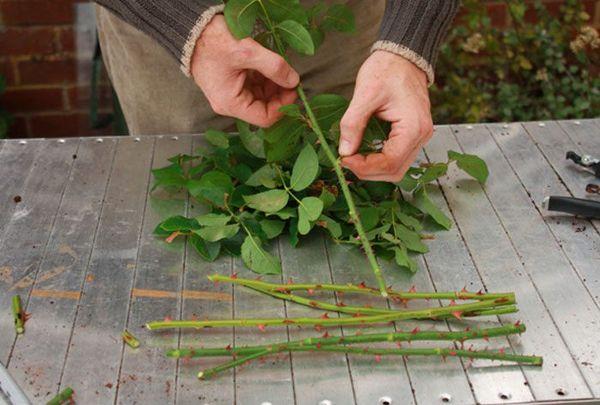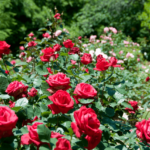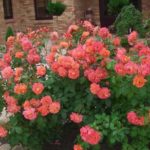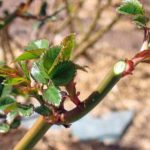Rose Nina comes from Denmark, the variety is famous for the rich scarlet color of its flowers. They look impressive in the garden and combine well with other plants. The variety is easy to care for and is recommended for cultivation by gardeners with or without experience. Flowers look gorgeous in bouquet arrangements and perfectly decorate even the most unremarkable garden. To successfully grow a crop, you should become familiar with all its nuances.
- History and description
- Advantages and disadvantages of the bush
- Rose blossom
- External parameters of the bush
- Cultivation technology
- Choosing a place for a rose
- Required temperature, humidity and light
- Soil composition
- Seedling preparation
- Scheme and rules for planting roses
- Features of caring for the Nina rose variety
- Bush irrigation
- Fertilizer application
- Pruning rose bushes
- Rose transplant
- Wintering
- Rose propagation methods
- What diseases and pests are dangerous for roses?
History and description
The Nina rose variety originated more than 50 years ago in Denmark. The variety was obtained by crossing polyanthus musk and hybrid tea roses. The plant is adapted to frosty winters, blooms profusely with red buds, and does not require special care. Floribunda variety Nina Weibul is a perennial bush of medium height. It is not afraid of weather conditions; the crop blooms until the first frost. The variety is resistant to diseases and harmful beetles.
Advantages and disadvantages of the bush
The Nina Weibull variety has a number of positive and negative qualities. Familiarizing yourself with them will help you decide whether to grow Scandinavian flowers or not.
| pros | Minuses |
| Increased resistance to low temperatures | Abundance of thorns |
| Low susceptibility of the bush to black spot and powdery mildew | Lack of aroma |
| Mass planting of bushes is possible to promote rose flowering at the same height | |
| Easy adaptation to different growing conditions |
Rose blossom
The variety is incredibly resistant to rain, the flowers do not fade in the scorching sun. This allows the plant to bloom continuously throughout the season. The first buds form in mid-June, after which abundant pollen lasts until November. In order for the variety to annually produce beautiful, rich scarlet flowers, they resort to fertilizing. A medium-sized bush stops forming after transplantation for 1 season. Roses look great when decorating rose gardens and designing garden areas. Double flowers with a diameter of 5 cm, collected in inflorescences of 5 pieces.
External parameters of the bush
The medium-sized bush grows 75 cm high. The leaves are dark green in color, glossy surface. The stems are covered with many thorns.The shrub is compact, branched, no more than 0.5 meters in width. Up to 5 buds grow on one branch.
Cultivation technology
Floribunda Nina does not require special growing techniques. The rose is suitable for breeding for personal use or sale. They care for the crop in the same way as other representatives of the Rosaceae family.
Choosing a place for a rose
The Nina rose should be planted in the right place, this will ensure the formation of a large number of buds, abundant flowering, and intensive development. The area should be well lit; flowers love plenty of sunlight. Bushes do not like drafts or gusts of north wind.
You cannot plant a rose in the shade of trees, they will take away not only sunlight, but also nutrients from the soil. The place should be flat, slightly hilly, since there is a danger of winds on the hills, and a lot of moisture accumulates in the lowlands. Stagnation of water is dangerous due to the death of rhizomes and the development of diseases. A place where roses have previously grown for 10 years is not suitable for planting.
Required temperature, humidity and light
Plant a rose bush at the end of May, when the air and soil warm up to 10 degrees Celsius and there will be no night frosts. The hole is prepared in advance, with a diameter of 70*70 cm. The rhizome should be placed in it. The hole is filled with a mixture of sand, peat and garden soil with humus in equal proportions. Additionally, you can add bone meal and phosphorus substances to the cavity.
Soil composition
The soil should be well drained and fertile. You should avoid land with a lot of salts and heavily wetlands. The rose takes root well in slightly acidic, well-fertilized soil or black soil.The acidity should be 5.6-7.3 pH. If the level is high, it is lowered by adding ash or lime, and raised with peat and manure.
Seedling preparation
The rhizome of the planting material is cut evenly, removing very long, rotten, broken parts. There should be 30 cm of length left. The shoots are also trimmed, leaving them 35 cm long. Before planting, soak the root system in water for 1 day. Add a stimulator like Kornevin to it.
Scheme and rules for planting roses
Rose bushes are planted according to the requirements below.
- A drainage layer of crushed stone and gravel is laid at the bottom of the pit. Next comes a layer of compost and humus combined with fertile soil. The latter will be made of garden soil poured into a dome. The thickness of each layer should be at least 10 cm.
- If the root system is open, before planting, dip it in water for 2 hours.
- When the seedling is grafted, monitor the grafting site during the planting process. It is deepened into the ground by 2 cm. This will promote the growth of roots and improve the nutrition of the bushes.
- Water the plant generously at the root. If the soil settles, fill it up.
At the end, the root circle of the bush is mulched with peat.
Features of caring for the Nina rose variety
It’s easy to care for the Nina rose; you just need to follow these steps:
- water the bushes in a timely manner;
- treat against pests and diseases;
- loosen the ground;
- apply fertilizing;
- trim bushes.
They also build a shelter for roses before the cold weather.
Bush irrigation
The soil in the flower bed must be loosened. The procedure allows the soil to breathe and improves its permeability. Weeding should be carried out the next day after rain, with settled water. First, destroy all weeds.
Fertilizer application
You need to feed the bushes on time, this will help improve the “health” of the rose and increase the intensity of pollen. The first feeding is carried out 10 days after spring pruning, before the sap flows with ammonium nitrate. Before pollen, add organic fertilizer. You can use mullein by diluting it in a ratio of 1:10. Before frost, add superphosphate and potassium salt under each bush.
Pruning rose bushes
The rose requires regular formative pruning and sanitary pruning once a year. In summer, faded buds should be plucked off to allow new flowers to form. After planting, do not let them bloom in the first year. A young bush should expend all its power on the formation of rhizomes.
In the spring, the bush is formed until the buds open in plants older than 2 years. This ensures continuous pollen every year. If the bush needs rejuvenation, radical pruning is done, after which up to 4 buds remain on each shoot.
Sanitary circumcision is carried out in autumn and spring. During the procedure, damaged, fungus-affected and weak branches are removed. You should also cut out shoots growing inside the bush, as they create an unwanted shadow.
Rose transplant
Roses are replanted from mid-April to May 15. Move the bush with a large earthen ball into the prepared 70*70 hole. Afterwards, leave 3 leaves on each shoot. The roots must remain intact, this is the most important aspect.
Wintering
Rose Nina is winter-hardy, but if long-term frosts prevail in the region, it is better to cover the bushes. If the temperature does not drop by more than 7 degrees below zero in winter, there is no need to make a shelter. The bush will harden more, to prepare for the cold weather. Cover the rose with earth, sprinkle with fallen leaves and spruce branches on top.Build a small frame on top and cover with non-woven material. First, remove all leaves and flower buds from the plant. Trim the stems so that their height is 40 cm.
Rose propagation methods
The Nina rose is widely propagated vegetatively, following the algorithm below.
- Select well-formed specimens and cut cuttings 10 cm long. Make the lower cut at a slope of 45 degrees, the upper cut parallel to the ground.
- If there are green leaves on the stem, remove them and remove all thorns.
- Treat the lower part of the cutting with a biostimulating solution.
- When placing planting material in the ground, maintain a distance of 15-25 cm.
- When covering the petioles with film, it is important to take into account that it should not touch them. Remove it regularly, before watering and airing.
You can also use the seeds in this way:
- Remove pulp from the selected planting material and place it between 2 cotton pads soaked in hydrogen peroxide;
- place the seedling in a plastic bag in the refrigerator;
- if the seeds become moldy, discard them, replace old cotton pads with new ones;
- after 1.5-2 months, the first shoots will appear, which serves as a signal to distribute the seedlings into separate containers.
In the future, provide the young plant with 10-hour lighting. It helps accelerate development.
What diseases and pests are dangerous for roses?
The rose is resistant to diseases and bugs, but sometimes the flower gets sick. It is attacked by powdery mildew, black spot, aphids, and fungi. Prevention is carried out by spraying the bush with copper sulfate or Bordeaux mixture.
Proper application of fertilizers also serves as a preventive measure. If diseases or beetles have already attacked the plant, it is sprayed with chemicals such as Abiga-Pink, Thiovit, colloidal sulfur.The treatment is carried out 2 times a day until the rose recovers.

